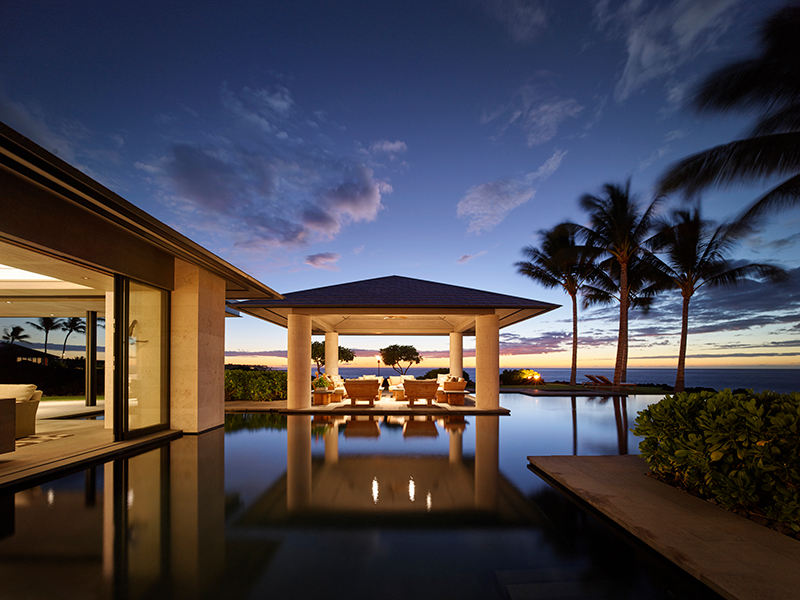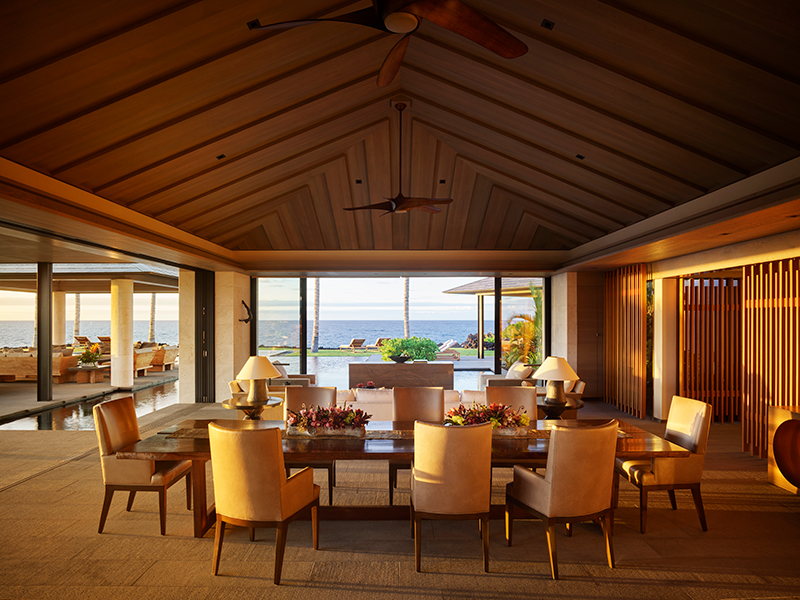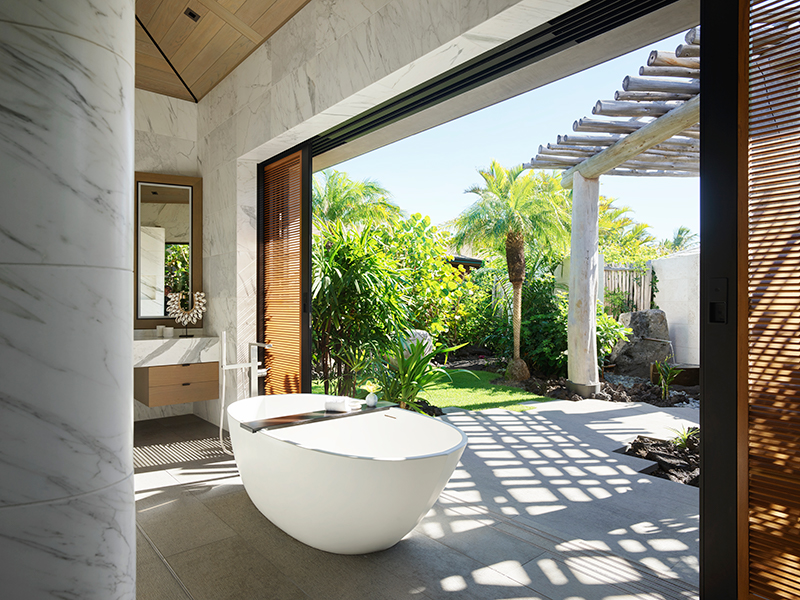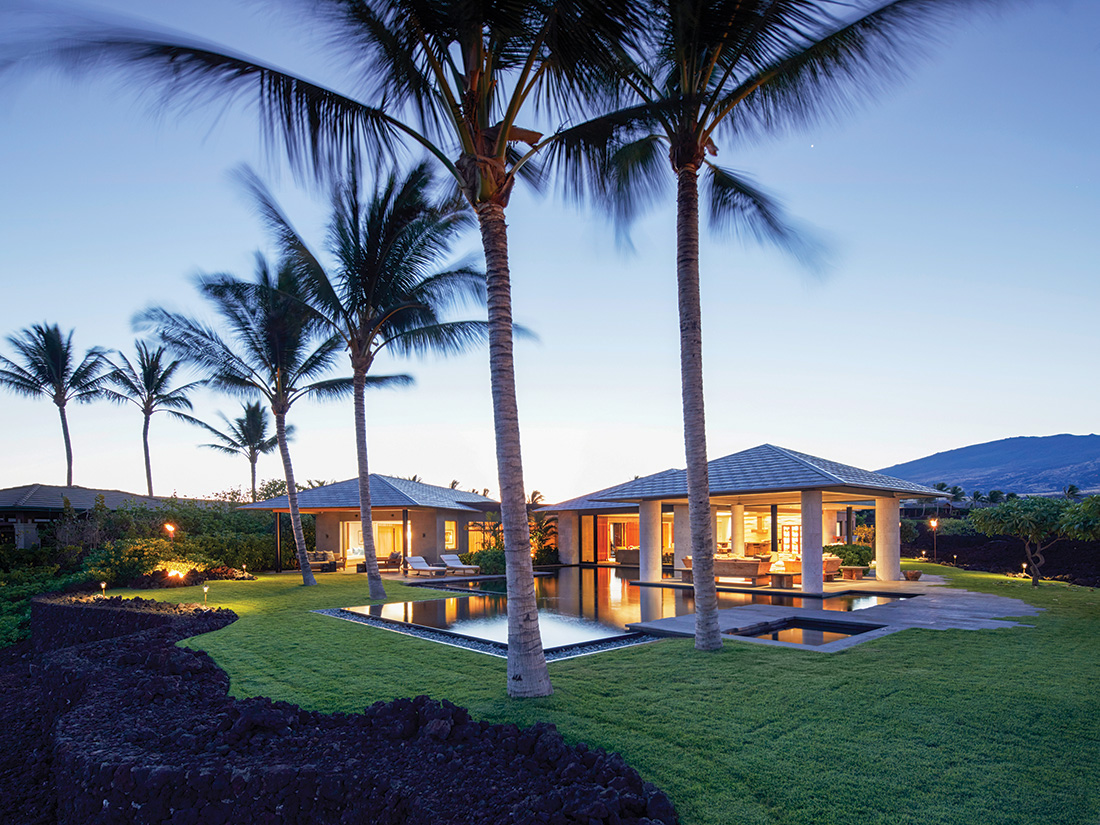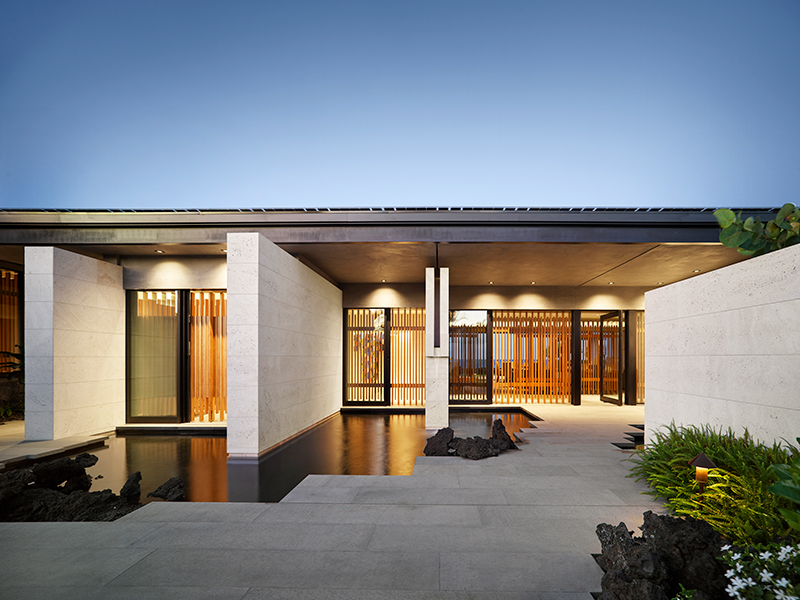Some of the world’s most magnificent seaside homes are in Hawaii, especially on the Big Island in the community of Kukio. Here, a collection of private club residences on the leeward side of the North Kona Coast offers unsurpassed luxury, privacy, weather, and ocean views.
These homes also reflect the best aspects of Pacific regionalism, thanks to Mark de Reus, partner, AIA at de Reus Architects, who began designing homes at Kukio before the club opened in 2003. “The idea is to lose the distinction from the inside to the outside and refine the sense of what it means to live in nature,” says de Reus, who developed his tropical design expertise when working in Indonesia for five years. “In the case of this resort, the design relates to Hawaii, the region, and spirit of the land.”
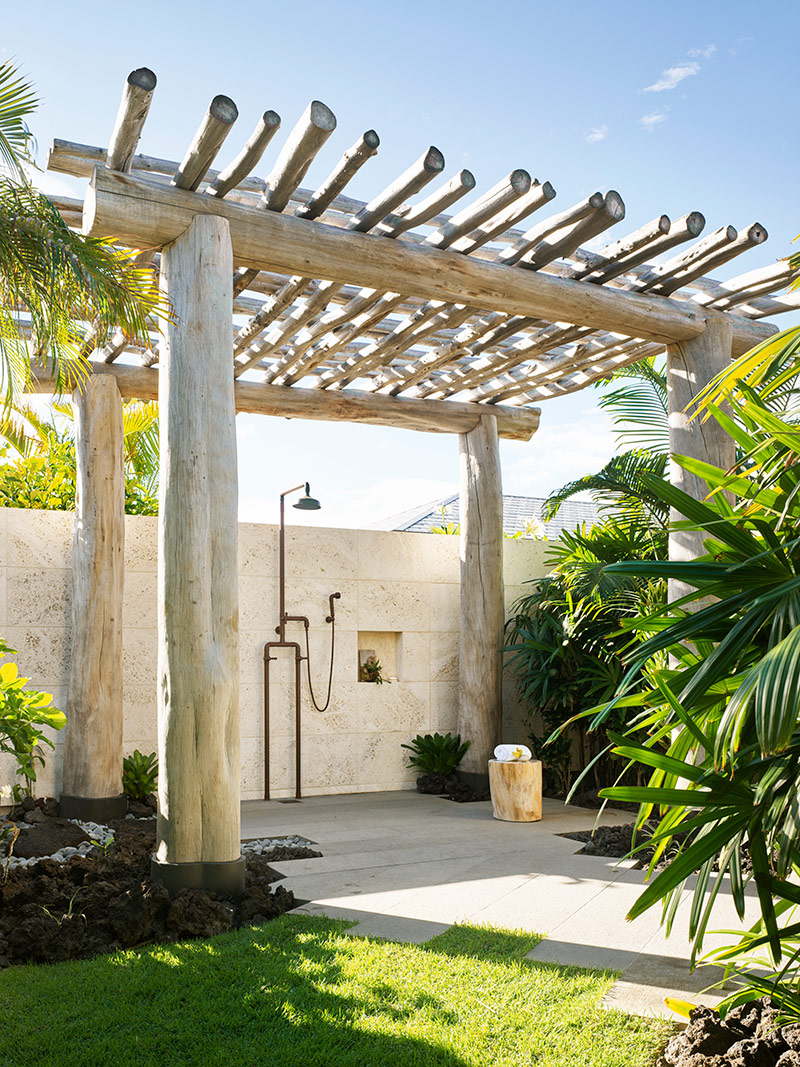

One of the homes de Reus conceived is Kolomuo, built for a middle-aged couple with grown children. “They wanted the home to have multiple bedrooms for family and friends and a living room, kitchen, and dining area all in one space,” says de Reus. “They also wanted to capture the views as much as possible.”
To that end, de Reus designed Kolomuo as a modern, tropical family compound with five pavilions interconnected through lush landscaping. In addition to a central gathering pavilion housing the kitchen living and dining area, a lanai shelters an outdoor lounge area and a master pavilion contains the couple’s bedroom suite and office.
Slightly removed from this cluster is a pavilion housing guest rooms and a pavilion for the recreation room and garage. “I designed the home to make the residence feel more intimate when just the couple was living there by tightly grouping together the main gathering pavilion, lanai, and master pavilion with the pool connecting all three,” says de Reus.
Regarding the views, all the lots at Kukio faced the ocean. But de Reus found this orientation confining, so he made a bold architectural move. “I took advantage of a dedicated easement where the 1801 lava flow [from the eruption of Hualalai volcano] came down and turned the home to capture more exciting views,” he says. “In addition to giving the owners vistas over the lava flow, this new angle provided multiple glancing views of the coastline, allowing the owners to see the edges of the island, the undulations of the ocean, and full-on sunrises and sunsets.”
Per the development’s guidelines, de Reus had to build Kolomuo on one level. But he elevated the guest pavilion to increase water views. He also modernized the required hip roofs by making each pavilion’s roof edges ultra-thin and deepening the eaves. He used durable anodized aluminum for exterior detailing and chose a warm, gray exterior plaster to enhance the crisp modulation of the doors and windows. An abundance of natural materials inside the home, such as stone, teak, granite, and cerused oak, heightens Kolomuo’s organic beauty.
To accent the home’s subtle Japanese architectural influences, the owners and interior designer Marion Philpotts-Miller, of Philpotts Interiors, chose an antique Taishō period (1912-26) kimono to hang in the entry foyer. Other Japanese touches include slatted teak screens to separate spaces, but unlike shoji screens, they allow airflow and some visibility, as well as artful shadow play on sunny days. In the kitchen, a carved geometric pattern inspired by modern kimono design graces a limestone back wall. This same pattern appears on the headboard wall in the master bedroom, where pendant lights resembling traditional Japanese lanterns hang.
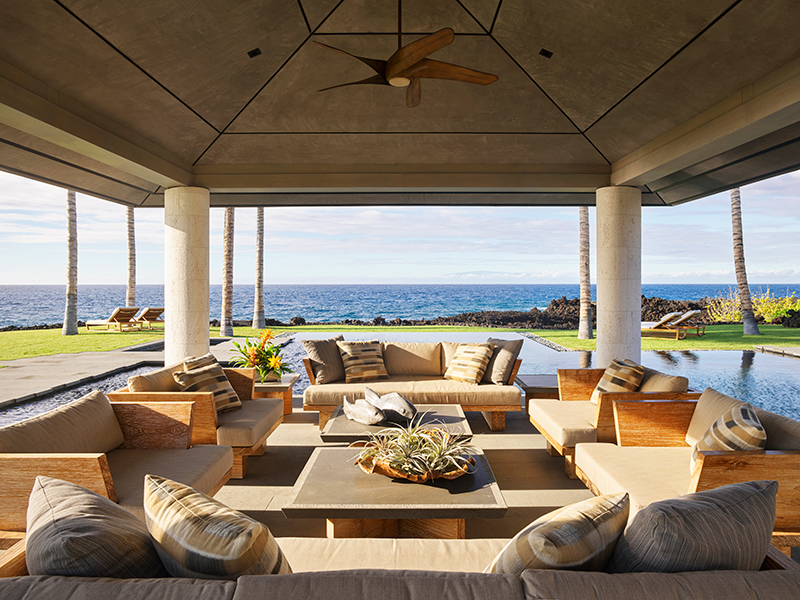

By the front gate, a textured lava stone path leads visitors to an interior garden, in the same way a roji guides visitors to a Kyoto teahouse. Landscape architect David Y. Tamura, who is of Japanese descent, did Japanese garden-inspired plantings around the home to elevate its overall design and Japanese aesthetic.
One of de Reus’s points of pride at Kolomuo is the stained-gray white oak vertical plank ceiling over the main gathering area. “It harkens back to the concept of minimal shelter, but in a high-crafted, modern way,” says de Reus. Another favorite spot is the master bathroom with its massive, curved marble wall. “It holds the shower and was designed to have contiguous veining in the marble; the curved shape also softens edges of the rectangular room,” he says. Instead of putting two rectangular mirrors over the double-sink vanity, de Reus installed two rectangular windows with views onto the outdoor garden. He then discreetly tucked two small, angled mirrors on either side of the vanity.
To intensify the feeling of living outside, de Reus designed most of the home’s doors to slide into interior pockets, creating rooms with seemingly no walls. He also integrated an abundance of reflecting pools into his floor plan to bolster the feeling of waterfront living.
“The design of Kolomuo is one concept of minimalism, restraint, and craftsmanship that experientially merges the inside with the outside,” says de Reus, “and the feedback we’ve gotten is that the couple loves the design and loves using the home.”
For more information, visit dereusarchitects.com.


